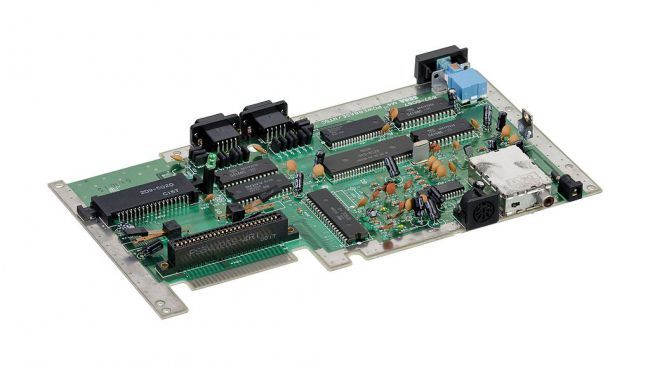Manually master the paging file
Windows 10 can be very resource intensive. At times the capacity Supplied by your physical RAM (Random Access Memory) is insufficient to hold every running program and procedure.
Microsoft’s smart Work around to this challenge is through a particular’paging file’ called pagefile.sys. This will definitely hold any data that your RAM can’t. While pagefile.sys isn’t anywhere near as efficient as the finest RAM, it does stop your system from crashing when funds run low.
Windows 10 Is configured by default to automatically deal with the paging file. Should you need to free up some space in your drive or improve system efficiency even further, you can transfer pagefile.sys to an external disk or set a size limitation.
Do not worry however, we’ll demonstrate The way to see pagefile.sys in addition to manage manually. Please take some time to read our guidance on deleting the file (ie: don’t) and also be sure that you backup your PC prior to making any changes.
Is pagefile.sys safe to delete?
Because Pagefile contains important information regarding your running and PC state applications, deleting it may have serious consequences and tank the stability of your system. Pagefile is totally necessary for the operation of your computer though it takes up a large amount of space in your drive. This is exactly why pagefile.sys is hidden by default on Windows 10.
If you choose not to heed our warning and are Decided to delete pagefile.sys, follow the steps to look at protected system files in Windows 10.
To delete pagefile.sys
If You think your pagefile.sys has become corrupted or is causing additional system problems, you may choose to delete it although it is not advised.
Follow the steps below to locate and delete the file. We will also demonstrate how to run a backup of your Windows 10 system in case deleting causes difficulties.
1. View concealed OS Documents
In order to delete pagefile.sys you first have to be able to see it.
To begin you firstly need to be able view pagefile.sys. Open the file explorer and navigate to the C: Drive.
Press Control + F1 to enable the ribbon menu. Click on’view’ and then’Options’. A drop down menu will appear.
Click ‘Change search and folder choices’. In the window that appears, click on the’view’ tab and then uncheck’Hide protected system operating files (Recommended)’.
Check the radio button’Show hidden files, folders, and drives’click’Apply’. Pagefile.sys will now be visible.
2. Backup your files
Close and save Any documents you’ve got open. You can do this using Windows tool, if you have never backed up your files before. You can get this under’Settings’ and ‘Update and safety’.
You’ll need a committed External hard disk to store your backups. Be sure that it’s capability is at least as big as the drive inside your machine.
Once you’re prepared to proceed with your copies, follow the following step on the Micorosoft website (https://support.microsoft.com/en-ie/help/17143/windows-10-back-up-your-files) to protect your data.
3. Delete pagefile.sys
Click On pagefile.sys and select’Delete’. If your pagefile is particularly large, the machine may need to delete it immediately without sending it into the Recycle Bin. Restart your PC, When the file has been removed.
To move pagefile.sys
By default. Pagefile.sys is approximately 12GB in size. This will be different based on how many resources your PC uses and the amount of RAM it has.
You are able to move to save on precious hard disk space Pagefile.sys to an external drive. This might increase your system speed based on the form of disk e.g. an SSD and access rates e.g. via USB 3.0. Whichever induce you use, make sure that it’s formatted to NTFS, which can handle file sizes that are larger.
1. Access Advanced settings
In Windows 10 open ‘Control Panel’. Select the Windows icon in the base of your desktop computer and enter the word”Advanced”. Then choose’view advanced system settings’. In the’Performance’ section click’Settings’.
In click on the’Advanced’ tab. Locate the section called’Virtual Memory’ and click’Change’
2. Select your external drive
In the’Virtual Memory’ window, uncheck the option’Automatically manage paging file size of every drive’.
Under’System manage file’ select’No’ paging file’. Next, choose the drive that is revealing below the C Drive.
Click on the’Set’ button. Read through the warning message and then click’Yes’ if you want to proceed.
3. Restart your PC
Your system will Have to restart for these changes to take effect. Click’Ok’ to dismiss the pop-up message. Save and close any open files and then reboot your PC.
Windows 10 will automatically delete the old pagefile.sys and generate a fresh one on the outside drive.
The way to resize pagefile.sys
Windows 10 automatically handles the size of pagefile.sys for you, but if hard disk space is at a premium, you can impose limits. Keep in mind that this could decrease system performance.
One way to get your cake And eat it is to install more RAM. This means that the system is based less on the paging file making it smaller. For instance our Windows 10 testing system has 32GB of RAM which led to a paging file of less than 2.5GB.
1. Assess Memory usage
To ascertain how much virtual memory your system is currently using, press Ctrl + Alt + Del to get’Task Manager’.
Click The’Performance’ tab and then choose’Memory’. Pay careful attention to the total amount of memory (in use), as this will give you a rough idea of how large pagefile.sys must be.
You will want to do this over several days to work out how much virtual memory you’re employing on average.
2. Access advanced settings
In Windows 10 open ‘Control Panel’. Select the Windows icon in the base of your desktop and enter the word”Advanced”. Next, system configurations’ innovative. In the’Performance’ section click’Settings’.
In click the’Advanced’ tab. Find the section named’Virtual Memory’ and click on’Change.
3. Set size limits
From the’Virtual Memory’ window, uncheck the option’Automatically manage paging file size of each drive’. Select the option’Custom dimensions’. Establish file to 800MB below’size’.
Under’maximum size, input your Desired limit for the page file in MB. Remember 1GB = 1,024MB e.g. a maximum size of 8GB is 8,192MB. Click on’Set’ to confirm that your changes.



















